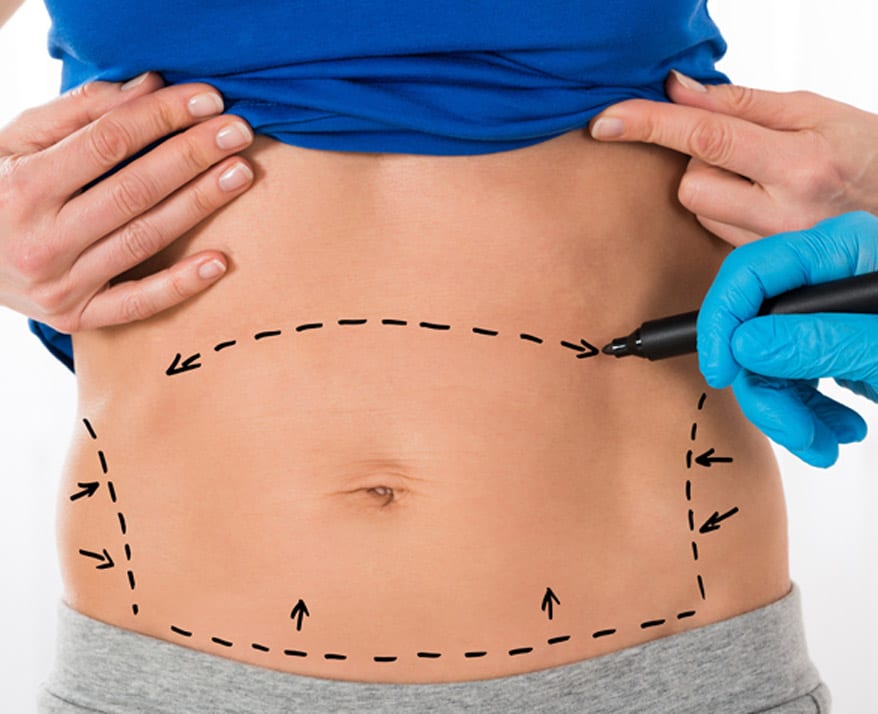- 13320 Riverside Dr., Suite 226, Sherman Oaks, CA 91423
Home » Body Treatments » Tummy Tuck

A tummy tuck is a cosmetic surgical procedure that involves removing excess skin and fat from the abdomen to improve its appearance.
A tummy tuck may be an option for individuals who have excess fat, poor elasticity of the skin, or weakened connective tissue in the abdomen due to:
A tummy tuck may not be appropriate if the patient:
A tummy tuck can remove stretch marks and excess skin in the lower abdomen below the belly button. However, a tummy tuck won’t remove stretch marks outside of this area.


Before scheduling surgery, patients should understand the risks of a tummy tuck.
Fluid accumulation beneath the skin. Also known as seroma, this can be prevented by inserting drainage tubes to reduce the risk of excess fluid.
Poor wound healing. Occasionally, areas along the incision line don’t heal properly or begin to separate. Patients may be given antibiotics during and after surgery to prevent infection.
Additional scarring. The length and visibility of the scar may vary from person to person. However, the incision is typically made along the bikini line to reduce visibility.
Tissue damage or death. Fatty tissue deep within the skin may be damaged, potentially causing its death. Some patients may need a surgical touch-up procedure to address this.
Changes in skin sensation. Because the surgeon will reposition abdominal tissue, the nerves in the abdomen and thighs may also be affected. Patients may have some numbness or reduced sensation which typically diminishes within a few months after surgery.
The patient will be placed under general anesthesia before surgery can begin. Some patients may also receive pain-relieving medication.
During a tummy tuck, the surgeon will make incisions to remove excess skin and fat between the belly button and pubic hair in a horizontal oval or elliptical shape. The surgeon will then tighten connective tissue that covers the abdominal muscles using permanent sutures and reposition the skin around the belly button.
Next, the surgeon will bring out the patient’s belly button through a small incision and suture it in place. The incision running from hip to hip above the pubic hair will be stitched together and the patient will have a scar that falls along the natural crease within the bikini line. The entire procedure may take between two and three hours.
Small tubes may be placed along the incision site to drain excess blood or fluid and the patient’s abdominal incision and belly button will be covered with surgical dressing. The patient will need to wear a supportive abdominal garment for about six weeks after the tummy tuck to help prevent fluid buildup and provide abdominal support.